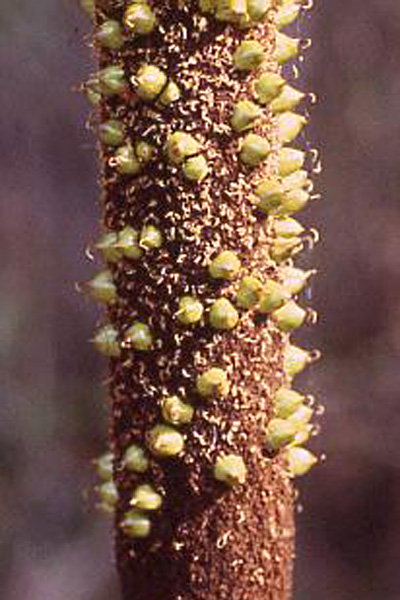General Description:
This genus of about 15 species comprises perennials with an underground stem and with or without a tall, rough stem above the ground. The genus is related to the lilies but most botanists place the species in a separate family, the Xanthorrhoeaceae.
Xanthorrhoea australis is probably the most widely distributed species. It usually develops a rough trunk which may be branched and which is coloured black, the result of surviving many bush fires. However, the plant is very slow growing and trunks only start appearing after many years of growth. The long, narrow leaves are crowded at the tops of the trunks.
The individual flowers are white or cream and very small. They are clustered together in a spear-like spike which can tower 2 metres or more above the top of the trunk. The flowers contain considerable nectar which was used by aborigines to produce a sweet drink by soaking the flowers in water. The nectar also attracts honey eating birds. Flowering occurs in spring but it may not occur annually. Prolific flowering is often seen in the season following a bushfire. The flowers are followed by fruits containing a few hard, black seeds.
Seed germinates reasonably well without pretreatment, although growth is slow and seedlings take many years to develop into large specimens. They do, however, form attractive small garden plants in 3-4 years.
Established plants may be successfully transplanted provided a large root ball is taken. This can be difficult to achieve without specialised, mechanical tree transplanting equipment, so should not be attempted unless there is no alternative. Transplanted specimens are commonly available in nurseries and these should re-establish successfully provided they are given well drained conditions and are not allowed to dry out during the re-establishment period.

Xanthorrhoea australis – plant habit.
Photo: Brian Walters

Xanthorrhoea australis – developing fruits.
Photo: Brian Walters
 Australian Native Plants Society (Australia)
Australian Native Plants Society (Australia)